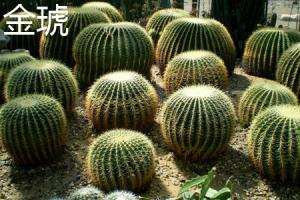Introduction
Palm trees are a popular choice for landscaping because of their attractive appearance and ability to add a tropical feel to any environment. Traditionally, palm trees have been planted in soil, but recently, there has been an increasing interest in using non-soil mediums as an alternative for growing palm trees. In this article, we will explore what non-soil mediums are suitable for planting palm trees and why they are becoming more popular.
What is a non-soil medium?
A non-soil medium is any substance that is used to grow plants that is not pure soil. Typically, these mediums are made up of a combination of organic and inorganic materials, such as peat moss, vermiculite, perlite, coconut coir, sand, and gravel. Non-soil mediums offer a range of benefits including better drainage, enhanced aeration, and improved nutrient retention compared to traditional soil mediums.
Benefits of non-soil mediums for palm trees
Palm trees require well-draining soil that is rich in nutrients and provides adequate aeration. Non-soil mediums offer a range of benefits that make them ideal for growing palm trees. One of the primary benefits of these mediums is that they provide excellent drainage, which helps to prevent root rot and other diseases. Additionally, non-soil mediums are lightweight and porous, which allows for better air circulation around the roots of the palm tree, helping to promote healthy growth.
Types of non-soil mediums for planting palm trees
There are a variety of non-soil mediums that can be used for planting palm trees. Here are some of the most common ones:
Coconut Coir: This medium is made from the fibrous husks of coconut shells and is excellent for water retention and aeration. It is also pH-neutral, making it suitable for a wide range of plants, including palm trees.
Perlite: This medium is made from volcanic glass, is lightweight, and has excellent drainage properties. It is also pH-neutral and provides aeration to the roots of the palm tree.
Vermiculite: Like perlite, this medium is lightweight and has excellent drainage properties. It is made from expanded mica and is also pH-neutral.
Sand: This medium is commonly used to improve drainage in soil mixes. Palm trees planted in sandy soil will have excellent drainage, but may require additional fertilization to make up for the lack of nutrients in the sand.
How to plant a palm tree using a non-soil medium
The process of planting palm trees in a non-soil medium is slightly different from planting them in soil. Here is a step-by-step guide to planting a palm tree in a non-soil medium:
Select a container that is appropriate for the size of your palm tree and fill it with your chosen non-soil medium.
Remove the palm tree from its original container and loosen the roots. Place the palm tree in the center of the container on top of the non-soil medium.
Add more non-soil medium around the roots until the container is full. Make sure that the palm tree is planted at the same depth as it was in its original container.
Water the palm tree thoroughly and allow the excess water to drain away. Repeat the process as necessary, making sure that the non-soil medium remains moist but not waterlogged.
Fertilize the palm tree as needed to provide the necessary nutrients. Follow the instructions on the fertilizer packaging carefully to avoid over-fertilizing.
Conclusion
Non-soil mediums offer many benefits for planting palm trees, including better drainage, enhanced aeration, and improved nutrient retention. Using a non-soil medium can increase the chances of success in growing a healthy and beautiful palm tree. When selecting a non-soil medium for planting, consider factors such as water retention, nutrient content, and pH balance to ensure that your palm tree has the best chance of thriving in its new environment.

 how many times do yo...
how many times do yo... how many planted tre...
how many planted tre... how many pine trees ...
how many pine trees ... how many pecan trees...
how many pecan trees... how many plants comp...
how many plants comp... how many plants can ...
how many plants can ... how many plants and ...
how many plants and ... how many pepper plan...
how many pepper plan...
































